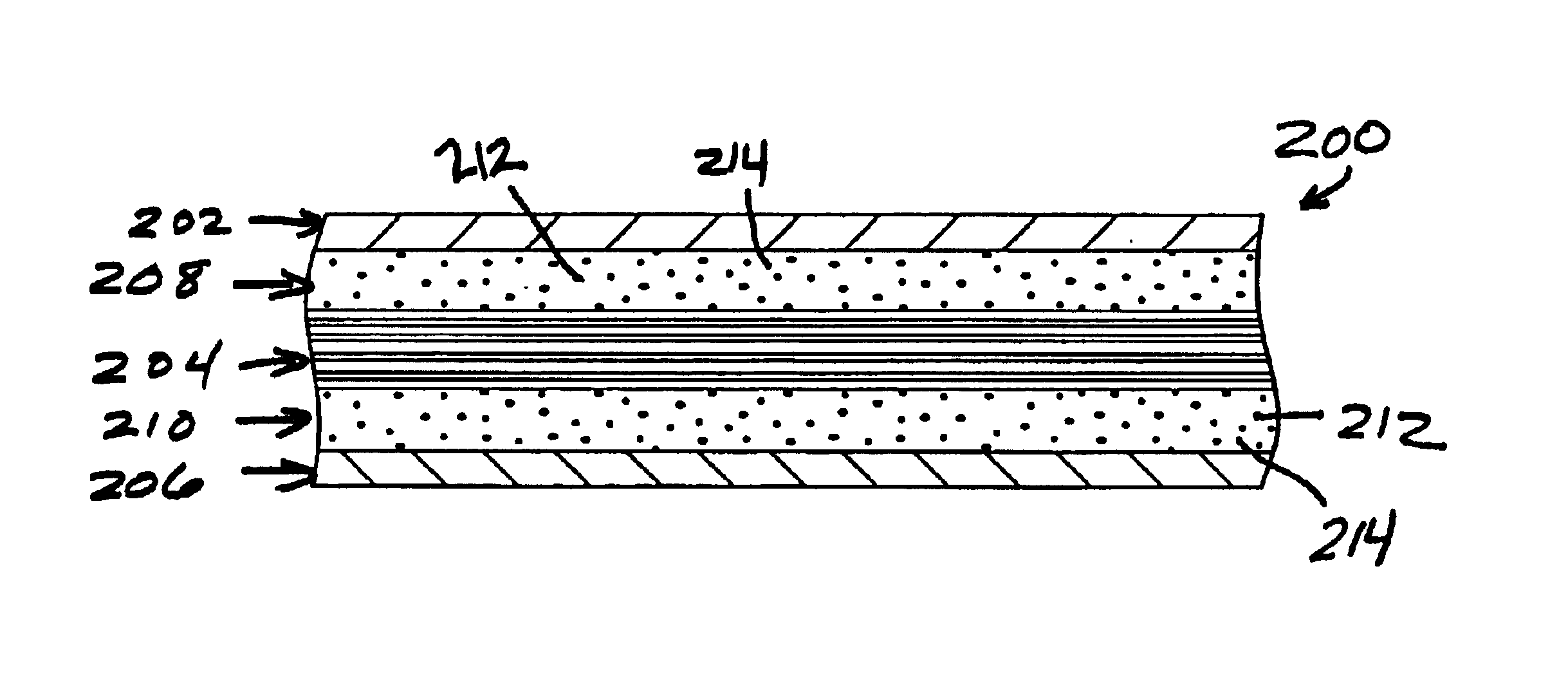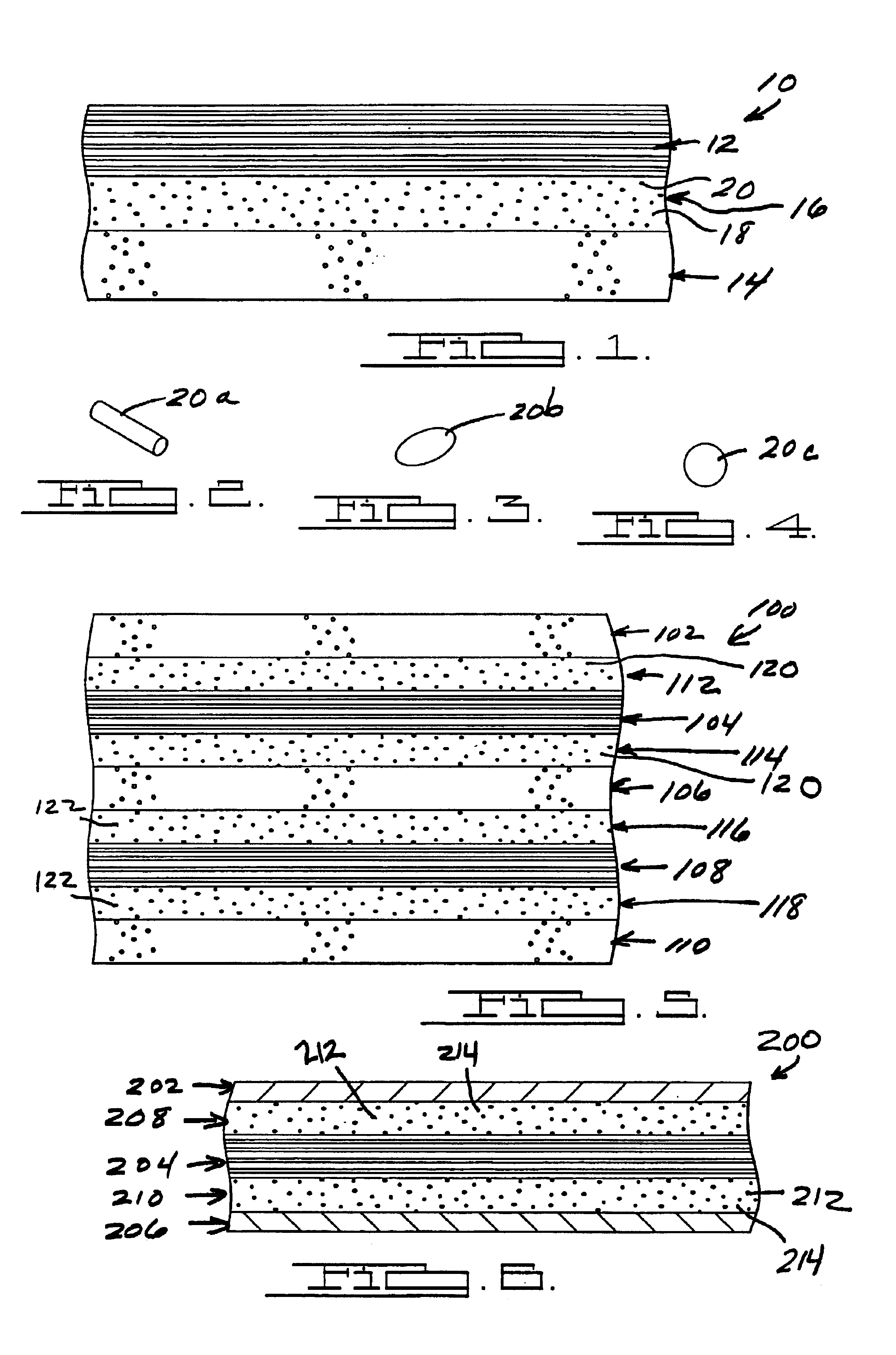Polymer composite structure reinforced with shape memory alloy and method of manufacturing same
a composite structure and shape memory technology, applied in the field of polymer composite structures, can solve the problems of trade-off relationship, ineffective for simultaneously increasing hot-wet compression strength, and inconvenient use, so as to improve damage resistance and damage tolerance
- Summary
- Abstract
- Description
- Claims
- Application Information
AI Technical Summary
Benefits of technology
Problems solved by technology
Method used
Image
Examples
Embodiment Construction
[0022]The following description of the preferred embodiment(s) is merely exemplary in nature and is in no way intended to limit the invention, its application, or uses.
[0023]Referring to FIG. 1, there is shown a polymer composite structure 10 in accordance with a preferred embodiment of the present invention. The composite structure 10 includes a first fiber layer (i.e., ply) 12, a second fiber layer (ply) 14 and a resin matrix interlayer or compound 16 for bonding the layers 12 and 14 together to form a single, unitary composite structure or material. Each of layers 12 and 14 are typically comprised of a plurality of fiber elements or filaments. Layer 12 is shown with 0° fibers and layer 14 is shown with 90° fibers (i.e., fibers orientated at 90° from those of layer 12). It will be appreciated, however, that the particular arrangement of the fibers of each layer 12 and 14 could be varied to suit the needs of a particular application, and that the arrangement of the fibers of layers...
PUM
| Property | Measurement | Unit |
|---|---|---|
| Diameter | aaaaa | aaaaa |
| Temperature | aaaaa | aaaaa |
| Structure | aaaaa | aaaaa |
Abstract
Description
Claims
Application Information
 Login to View More
Login to View More - R&D
- Intellectual Property
- Life Sciences
- Materials
- Tech Scout
- Unparalleled Data Quality
- Higher Quality Content
- 60% Fewer Hallucinations
Browse by: Latest US Patents, China's latest patents, Technical Efficacy Thesaurus, Application Domain, Technology Topic, Popular Technical Reports.
© 2025 PatSnap. All rights reserved.Legal|Privacy policy|Modern Slavery Act Transparency Statement|Sitemap|About US| Contact US: help@patsnap.com


